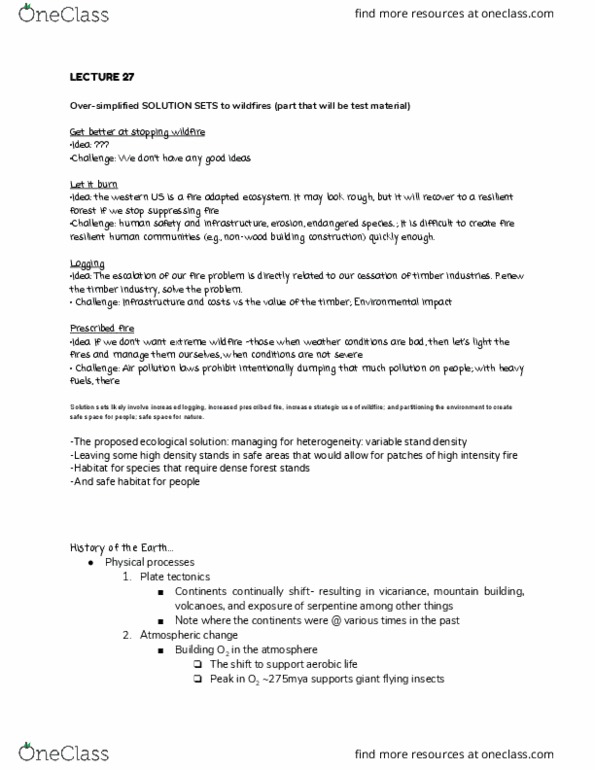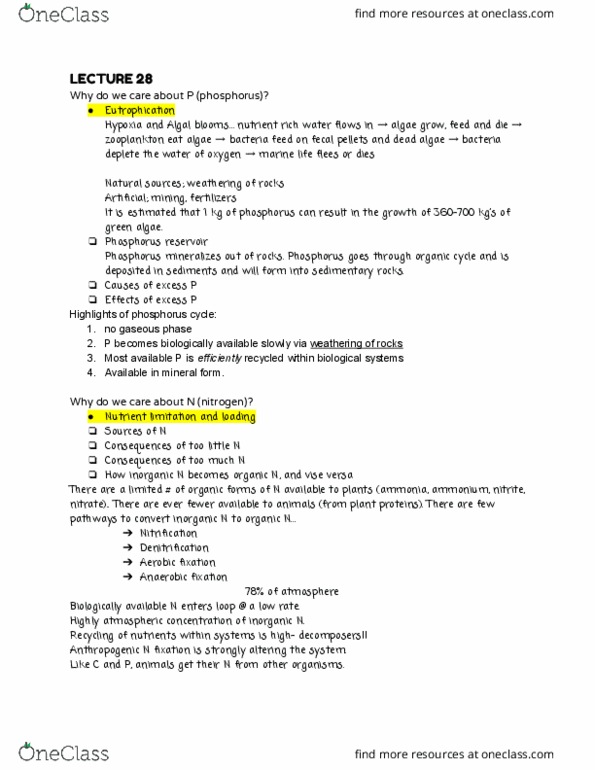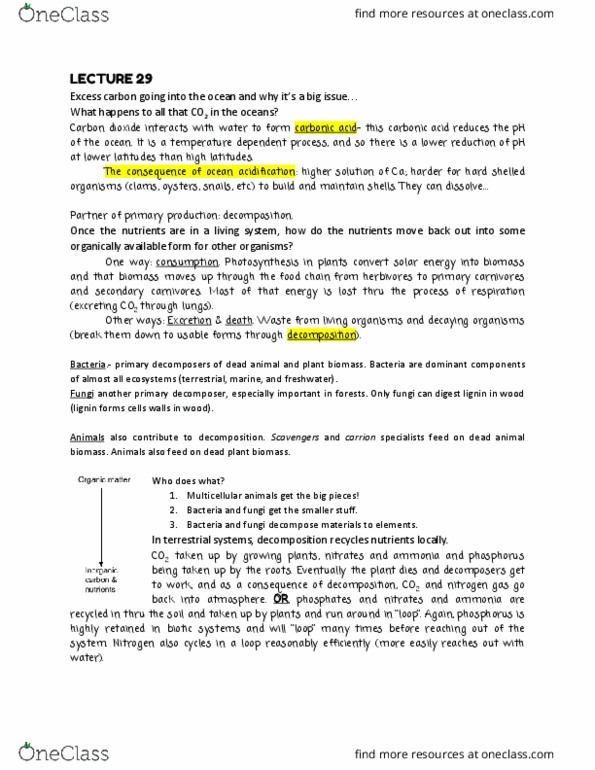BIS 2B Lecture Notes - Lecture 28: Phosphorus Cycle, Denitrification, Nitrification
BIS 2B verified notes
28/31View all
Document Summary
It is estimated that 1 kg of phosphorus can result in the growth of 360-700 kg"s of green algae. Phosphorus goes through organic cycle and is deposited in sediments and will form into sedimentary rocks. Highlights of phosphorus cycle: no gaseous phase, p becomes biologically available slowly via weathering of rocks, most available p is efficiently recycled within biological systems, available in mineral form. How inorganic n becomes organic n, and vise versa. There are a limited # of organic forms of n available to plants (ammonia, ammonium, nitrite, nitrate) There are ever fewer available to animals (from plant proteins). There are few pathways to convert inorganic n to organic n . Biologically available n enters loop @ a low rate. Recycling of nutrients within systems is high- decomposers! Anthropogenic n fixation is strongly altering the system. Like c and p, animals get their n from other organisms.




